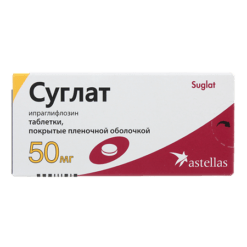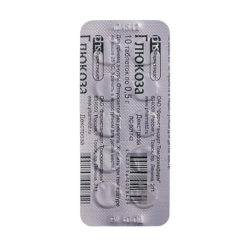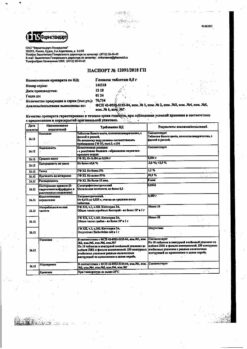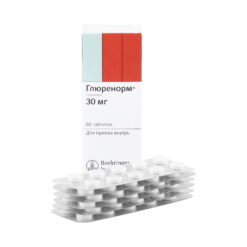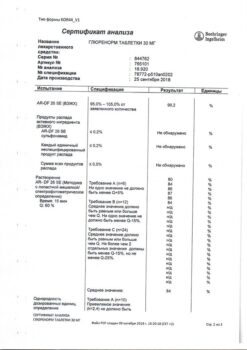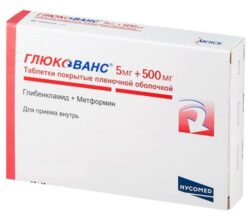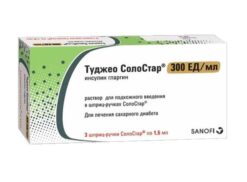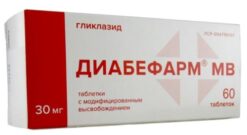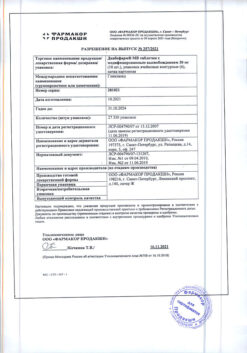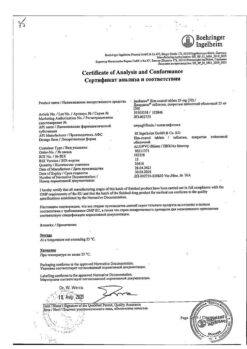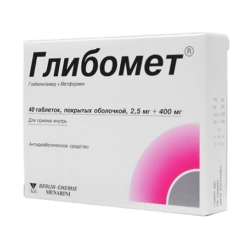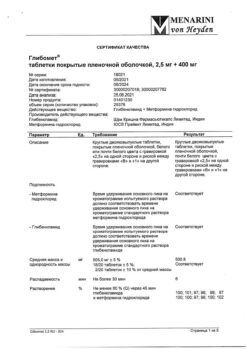No products in the cart.
Quincenta 0.25/0.5/1 mg/dose 3 ml syringe pen 1 pc. + needle 9 pcs.
€121.00 €118.91
Description
Quincenta is indicated for use in adult patients with type 2 diabetes mellitus on diet and exercise to improve glycemic control as: • monotherapy; • combination therapy with other oral hypoglycemic agents (OHGA) – metformin, metformin and a sulfonylurea derivative, metformin and/or a thiazolidinedione in patients who have not achieved adequate glycemic control with previous therapy; • combination therapy with insulin in patients who have not achieved adequate glycemic control with semaglutide and metformin. Quincenta is indicated to reduce the risk of serious cardiovascular events* in patients with type 2 diabetes mellitus and high cardiovascular risk as an adjunct to standard cardiovascular treatment (based on the analysis of the time to first serious cardiovascular event – see section “Pharmacological properties”, subsection “Evaluation of the effect on CVS”). *serious cardiovascular events include: death due to cardiovascular disease, non-fatal myocardial infarction, non-fatal stroke. Compatible with all pen needles. Ozempic
Instructions
Instructions
Dosage regimen
The initial dose of Quincenta is 0.25 mg once a week. After 4 weeks of use, the dose should be increased to 0.5 mg once a week. To further improve glycemic control, after at least 4 weeks of use of the drug at a dose of 0.5 mg once a week, the dose can be increased to 1 mg once a week.
The dose of Quincenta 0.25 mg is not therapeutic. It is not recommended to administer more than 1 mg per week.
Quincenta may be used as monotherapy or in combination with one or more hypoglycaemic drugs (see section “Clinical efficacy and safety”).
When adding Quincenta to previous metformin and/or thiazolidinedione or SGLT2 inhibitor therapy, metformin and/or thiazolidinedione or SGLT2 inhibitor therapy can be continued at the previous doses.
When adding Quincenta to existing sulfonylurea or insulin therapy, a reduction in the dose of the sulfonylurea or insulin should be considered to reduce the risk of hypoglycemia (see section “Special instructions”).
The use of Quincenta does not require self-monitoring of blood glucose concentration.
Self-monitoring of blood glucose concentrations is necessary to adjust the dose of sulfonylurea and insulin, especially at the beginning of treatment with Quincenta and when reducing the insulin dose. A stepwise approach to reducing the insulin dose is recommended.
Missed dose
If a dose is missed, Quincenta should be administered as soon as possible within 5 days of the scheduled dose. If the missed dose is longer than 5 days, the missed dose should not be administered. The next dose of Quincenta should be administered on the regularly scheduled day. In either case, patients may resume their usual once-weekly dosing schedule.
Special patient groups
Elderly patients (≥ 65 years)
No dose adjustment is required based on age. Experience with semaglutide in patients aged 75 years and older is limited.
Patients with liver failure
No dose adjustment is required in patients with hepatic impairment (see section 5.2). Experience with semaglutide in patients with severe hepatic impairment is limited; the use of Quincenta in such patients is contraindicated.
Patients with renal failure
No dosage adjustment is required in patients with renal impairment. There is no experience with the drug in patients with end-stage renal failure; the use of Quincenta in such patients is contraindicated.
Children and teenagers
The use of Quincenta in children and adolescents under 18 years of age is contraindicated due to the lack of safety and efficacy data.
Directions for use
The drug Quincenta is used once a week at any time, regardless of food intake.
Quincenta is administered subcutaneously into the abdomen, thigh, or shoulder. The injection site may be changed without dose adjustment. Quincenta should not be administered intravenously or intramuscularly.
If necessary, the day of weekly administration can be changed, provided that the time interval between two injections is at least 3 days (> 72 hours). After choosing a new day of administration, the drug should be administered once a week.
Further information on the method of application is contained in the section “Instructions for use”.
Composition
Composition
1 ml of the preparation contains:
Active ingredient: semaglutide 1.34 mg;
Excipients: sodium hydrogen phosphate dihydrate, phenol, propylene glycol, sodium hydroxide or hydrochloric acid, water for injection.
For Quinsenta 0.25/0.5 mg/dose pen:
One pre-filled pen contains 2 mg semaglutide/1.5 ml medicinal product solution.
For Quinsenta 1 mg/dose pen:
One pre-filled pen contains 4 mg semaglutide/3 ml medicinal product solution.
Contraindications
Contraindications
Hypersensitivity to semaglutide or any of the excipients of the drug
History of medullary thyroid cancer, including family history
Multiple endocrine neoplasia (MEN) type 2
Type 1 diabetes mellitus (T1DM)
Diabetic ketoacidosis
The use of Quincenta is contraindicated in the following patient groups and conditions/diseases due to lack of efficacy and safety data or limited experience:
pregnancy and breastfeeding period;
age under 18;
severe liver failure;
end-stage renal failure (creatinine clearance (CC) < 15 ml/min);
chronic heart failure (CHF) functional class IV (according to the NYHA (New York Heart Association) classification).
With caution
Semaglutide should be used with caution in patients with renal impairment and in patients with a history of pancreatitis (see section 4.4).
Use during pregnancy and breastfeeding
Pregnancy
Animal studies have demonstrated reproductive toxicity of the drug (see section “Special instructions”, subsection “Preclinical safety data”).
There are limited data on the use of semaglutide in pregnant women. Semaglutide is contraindicated during pregnancy. Women of childbearing potential are advised to use contraception during semaglutide therapy. If the patient is planning to become pregnant or is already pregnant, semaglutide therapy should be discontinued. Due to the long half-life, semaglutide therapy should be discontinued at least 2 months before the planned onset of pregnancy (see section 5.2).
Breastfeeding period
In animal studies in lactating rats, semaglutide was excreted in milk. A risk to the breast-fed child cannot be excluded. The use of semaglutide during breast-feeding is contraindicated.
Special instructions
Special instructions
The use of Quincenta is contraindicated in patients with type 1 diabetes or for the treatment of diabetic ketoacidosis.
Quincenta is not a substitute for insulin.
Diabetic ketoacidosis has been reported in insulin-dependent patients who had rapid discontinuation of treatment or reduction of insulin dose when initiating treatment with a GLP-1R agonist (see section 4.2).
Adverse reactions from the gastrointestinal tract
The use of GLP-1R agonists may be associated with gastrointestinal adverse events. This should be taken into account when treating patients with renal impairment, as nausea, vomiting, and diarrhea may lead to dehydration and deterioration of renal function.
Acute pancreatitis
Acute pancreatitis has been reported with the use of GLP-1R agonists. Patients should be informed of the characteristic symptoms of acute pancreatitis. If pancreatitis is suspected, therapy with Quincenta should be discontinued; if acute pancreatitis is confirmed, therapy with Quincenta should not be resumed. Caution should be exercised in patients with a history of pancreatitis.
In the absence of other signs and symptoms of acute pancreatitis, increased activity of pancreatic enzymes is not a prognostic factor for the development of acute pancreatitis.
Hypoglycemia
Patients receiving Quincenta in combination with a sulfonylurea or insulin may have an increased risk of hypoglycemia. When initiating treatment with Quincenta, the risk of hypoglycemia can be reduced by decreasing the dose of the sulfonylurea or insulin.
Diabetic retinopathy
An increased risk of complications of diabetic retinopathy has been observed in patients with existing diabetic retinopathy receiving insulin and semaglutide therapy (see section 4.8). Caution should be exercised when using semaglutide in patients with diabetic retinopathy receiving insulin therapy. Such patients should be closely monitored and treated according to clinical guidelines. Rapid improvement in glycaemic control has been associated with a temporary worsening of diabetic retinopathy, but other causes cannot be excluded.
Heart failure
There is no experience with the use of semaglutide in patients with CHF functional class IV according to the NYHA classification. The use of the drug in such patients is contraindicated.
Thyroid diseases
In the post-marketing period of use of another GLP-1 analogue, liraglutide, cases of medullary thyroid cancer (MTC) have been reported. The available data are insufficient to establish or exclude a causal relationship between the occurrence of MTC and the use of GLP-1 analogues. It is necessary to inform the patient about the risk of MTC and about the symptoms of thyroid tumor (the appearance of a lump in the neck, dysphagia, shortness of breath, persistent hoarseness).
A marked increase in plasma calcitonin may indicate MTC (in patients with MTC, plasma calcitonin values are usually > 50 ng/L). If an increase in plasma calcitonin is detected, the patient should be further evaluated. Patients with thyroid nodules detected during physical examination or thyroid ultrasound should also be further evaluated.
The use of semaglutide in patients with a personal or family history of MTC or with MEN type 2 syndrome is contraindicated.
Excipients
Quincenta contains less than 1 mmol (23 mg) sodium per dose
0.25/0.5 mg and 1 mg, meaning it essentially does not contain sodium.
Preclinical safety data
Preclinical data based on safety pharmacology, repeated dose toxicity and genotoxicity studies did not reveal any hazard to humans.
In 2-year carcinogenicity studies in rats and mice, semaglutide caused non-fatal thyroid C-cell tumors at clinically relevant concentrations. Non-fatal thyroid C-cell tumors observed in rats are characteristic of a class of GLP-1 analogues. The risk for humans is considered low but cannot be completely excluded.
Fertility
The effect of semaglutide on fertility in humans is unknown. Semaglutide did not affect fertility in male rats. In female rats, an increase in the estrous cycle and a slight decrease in the number of ovulations was observed at doses associated with a decrease in female body weight.
Impact on the ability to drive vehicles and operate machinery
Semaglutide has no or negligible influence on the ability to drive or use machines. Patients should be warned that they should take precautions to avoid hypoglycemia when driving or using machines, especially when using Quincenta in combination with a sulfonylurea derivative or insulin.
User Manual
Quincenta should not be used if it looks anything other than a clear, colorless or brownish solution.
The drug should not be used if it has been frozen.
The pre-filled multi-dose disposable syringe pen for Quincenta is available in two types:
1) for Quincenta, solution for subcutaneous administration, 0.25/0.5 mg/dose in a pre-filled syringe pen – allows you to administer doses of 0.25 mg or 0.5 mg. This syringe pen is designed to gradually increase the dose from the initial – 0.25 mg and maintain the therapeutic dose – 0.5 mg. One syringe pen contains 1.5 ml of solution (2 mg semaglutide). Compatible with any needles for syringe pens.
2) for Quincenta, solution for subcutaneous administration, 1 mg/dose – in a pre-filled syringe pen allows for the administration of doses of 1 mg only. This syringe pen is intended only for maintaining a therapeutic dose of 1 mg. One syringe pen contains 3 ml of solution (4 mg semaglutide). Compatible with all syringe pen needles.
The patient should be informed that the used needle should be discarded after each injection and that the pen should not be stored with the needle attached. This will prevent contamination, infection and leakage of the drug from the pen and ensure accurate dosing.
The syringe pen is intended for individual use only.
Always remove the needle after each injection and store the pen with the needle removed. This will help prevent clogged needles, contamination, infection, leakage, and incorrect dosing.
Packaging and release form
Packaging and release form
Solution for subcutaneous administration, 0.25/0.5 mg/dose – 1.5 ml of the drug containing 2 mg of semaglutide in cartridges.
The cartridge is installed in a plastic multi-dose disposable syringe pen for multiple injections. – one piece with 6 sterile disposable needles and instructions for medical use in a cardboard box.
Side effects
Side effects
The most frequently reported adverse reactions (ARs) during the clinical trials were gastrointestinal disorders, including nausea, diarrhea, and vomiting. In general, these reactions were mild to moderate in severity and short-lived.
HPs are classified into system organ classes according to MedDRA with an indication of their frequency of occurrence according to WHO recommendations: very common (≥ 1/10); common (≥ 1/100, but < 1/10); uncommon (≥ 1/1,000, but < 1/100); rare (≥ 1/10,000, but < 1/1,000); very rare (< 1/10,000) and not known (cannot be estimated from the available data).
Within each group, the incidence rates of HP are presented in decreasing order of severity.
Table 1. Adverse reactions identified during phase 3a clinical trials
Very common Often Uncommon Rarely Very rare Frequency unknown
Immune system disorders
Hypersensitivity Anaphylactic reactions
Metabolic and nutritional disorders
Hypogli-chemical
when used in combination with insulin or sulfonylurea derivative Hypoglycemia when used in combination with other PHGDs
Decreased appetite
Nervous system disorders
Dizziness Dysgeusia
Visual impairment
Complications of diabetic retinopathyb
Heart disorder
Increased heart rate (HR)
Gastrointestinal disorders
Nausea Vomiting
Acute pancreatitis
Diarrhea Abdominal pain
Bloating
Constipation
Dyspepsia
Gastritis
Gastroesophageal reflux disease
Belching
Flatulence
Liver and biliary tract disorders
Cholelithiasis Cholangitis
Cholestatic jaundice
Skin and subcutaneous tissue disorders
Angioedemad
General disorders and reactions at the injection site
Fatigue Injection site reactions
Laboratory and instrumental data
Increased lipase activity
Increased amylase activity
Weight loss
a Hypoglycemia defined as severe (requiring assistance from another person) or symptomatic in combination with plasma glucose concentration < 3.1 mmol/L.
b Complications of diabetic retinopathy are a combination of: need for retinal photocoagulation, need for intravitreal injections, vitreous hemorrhage, development of diabetes-related blindness. Incidence is based on CV outcome studies.
c A group term that also includes adverse reactions associated with hypersensitivity, such as rash and urticaria.
d Adverse reactions from post-marketing sources.
2-year CV outcome and safety study
In the high-risk CV population, the HP profile was similar to that seen in other Phase 3a studies (described in the Clinical Efficacy and Safety section).
Description of selected adverse reactions
Hypoglycemia
No episodes of severe hypoglycemia were observed during semaglutide monotherapy. Severe hypoglycemia was mainly observed when semaglutide was used in combination with a sulfonylurea or insulin.
Several episodes of severe hypoglycemia have been observed when semaglutide was administered in combination with other than sulfonylurea derivatives, GHBPs.
American Diabetes Association-classified hypoglycemia occurred in 11.3% (0.3 events/patient-year) of patients with semaglutide 1.0 mg added to an SGLT2 inhibitor compared with 2.0% (0.04 events/patient-year) of patients receiving placebo. Severe hypoglycemia was reported in 0.7% (0.01 events/patient-year) and 0% of patients, respectively.
Adverse reactions from the gastrointestinal tract
Nausea, diarrhea, and vomiting were reported in patients treated with 0.5 mg and 1 mg semaglutide. Most reactions were mild to moderate in severity and short-lived. ADRs resulted in premature discontinuation in 3.9% and 5.9% of patients, respectively. Adverse reactions were most frequently reported during the first months of therapy.
Patients with low body weight may experience more gastrointestinal adverse reactions when treated with semaglutide.
In a trial of co-administered SGLT2 inhibitors and semaglutide, constipation and gastroesophageal reflux disease occurred in 6.7% and 4% of patients receiving semaglutide 1.0 mg, respectively, compared with no events in patients receiving placebo. The incidence of these events did not decrease over time.
Acute pancreatitis
The incidence of acute pancreatitis confirmed by peer review in the Phase 3a studies was 0.3% with semaglutide and 0.2% with the comparator. In the 2-year cardiovascular outcomes study, the incidence of acute pancreatitis confirmed by peer review was 0.5% with semaglutide and 0.6% with placebo.
(see section “Special instructions”).
Complications of diabetic retinopathy
In a 2-year clinical trial involving patients with type 2 diabetes at high CV risk, long-standing diabetes, and inadequate glycemic control, confirmed events of diabetic retinopathy complications occurred in more patients receiving semaglutide (3.0%) than in patients receiving placebo (1.8%). In patients with a history of diabetic retinopathy at baseline, the absolute risk increase was higher. In patients without a confirmed history of diabetic retinopathy, the number of events was similar with semaglutide and placebo.
In clinical trials lasting up to 1 year, the incidence of diabetic retinopathy-associated adverse events was similar in the semaglutide and comparator groups.
Discontinuation of treatment due to adverse reactions
The rate of discontinuation due to AEs was 8.7% for patients receiving semaglutide 1 mg. The most common AEs leading to discontinuation were gastrointestinal disorders.
Injection site reactions
Injection site reactions (such as injection site rash, erythema) were reported in 0.6% and 0.5% of patients receiving semaglutide 0.5 mg and 1 mg, respectively. These reactions were generally mild.
Immunogenicity
Due to the potential immunogenic properties of protein and peptide medicinal products, patients may develop antibodies to semaglutide following therapy. At the end of the trial, the proportion of patients who had antibodies to semaglutide at any time point was low (1-2%), and no patients had neutralizing antibodies to semaglutide or antibodies with endogenous GLP-1 neutralizing effect.
Interaction with other drugs
Interaction with other drugs
In vitro studies with semaglutide have shown a very low potential for inhibition or induction of cytochrome P450 (CYP) enzymes and inhibition of drug transporters.
Delayed gastric emptying with semaglutide may affect the absorption of concomitant oral medicinal products. Semaglutide should be used with caution in patients receiving oral medicinal products that require rapid absorption from the gastrointestinal tract.
Paracetamol
When evaluating the pharmacokinetics of paracetamol during a standardized meal test, semaglutide was found to delay gastric emptying. When semaglutide 1 mg was co-administered, paracetamol AUC0-60 min and Cmax decreased by 27% and 23%, respectively. Total paracetamol exposure (AUC0-5 h) did not change. No dose adjustment of paracetamol is required when semaglutide and paracetamol are co-administered.
Oral hormonal contraceptives
Semaglutide is not expected to reduce the efficacy of oral hormonal contraceptives. When a combined oral hormonal contraceptive (0.03 mg ethinyl estradiol/0.15 mg levonorgestrel) was co-administered with semaglutide, semaglutide had no clinically significant effect on the total exposure to ethinyl estradiol and levonorgestrel. Ethinyl estradiol exposure was not affected; there was a 20% increase in levonorgestrel exposure at steady state. Cmax was not changed for either component.
Atorvastatin
Semaglutide did not alter the systemic exposure of atorvastatin following a single dose of atorvastatin (40 mg). Atorvastatin Cmax decreased by 38%. This change was considered clinically insignificant.
Digoxin
Semaglutide did not alter systemic exposure or Cmax of digoxin following administration of a single dose of digoxin (0.5 mg).
Metformin
Semaglutide did not alter metformin systemic exposure or Cmax after administration of metformin 500 mg twice daily for 3.5 days.
Warfarin
Semaglutide did not alter the systemic exposure or Cmax of the R- and S-isomers of warfarin following a single dose of warfarin (25 mg). Based on international normalized ratio (INR) determination, no clinically significant changes in the pharmacodynamic effects of warfarin were observed.
Incompatibility
Substances added to Quincenta may cause degradation of semaglutide. Quincenta should not be mixed with other medicinal products, including infusion solutions.
Overdose
Overdose
Overdoses of up to 4 mg in a single dose and up to 4 mg per week have been reported in clinical trials. The most common adverse reaction reported was nausea. All patients recovered uneventfully.
There is no specific antidote for overdose with Quincenta. In case of overdose, appropriate symptomatic therapy is recommended. Given the long elimination period of the drug (approximately 1 week), a prolonged period of observation and treatment of overdose symptoms may be required.
Special storage conditions
Special storage conditions
Store at a temperature of 2 to 8 ℃ (in the refrigerator), but not near the freezer. Protect from light. Do not freeze.
Store the syringe pen with the drug used or carried as a spare at a temperature not exceeding 30 °C or at a temperature
2 to 8 ℃ (in the refrigerator) for 6 weeks. Do not freeze.
After use, close the pen cap to protect from light.
Related products
Buy Quincenta 0.25/0.5/1 mg/dose 3 ml syringe pen 1 pc. + needle 9 pcs. with delivery to USA, UK, Europe and over 120 other countries.


